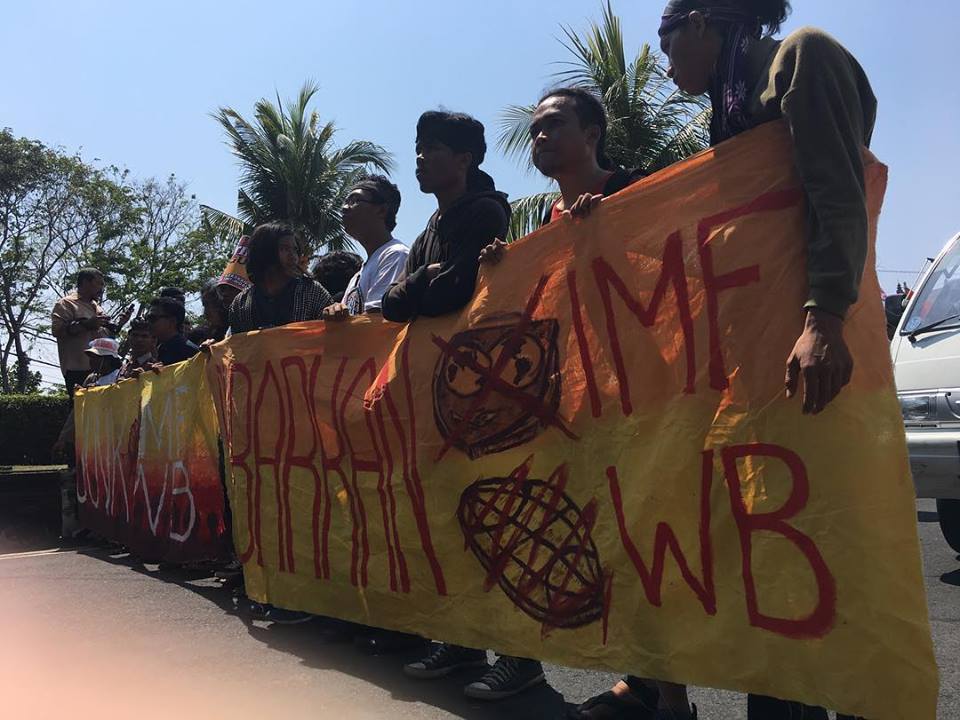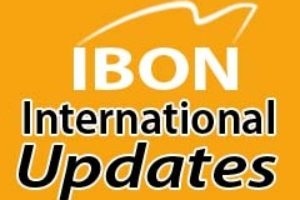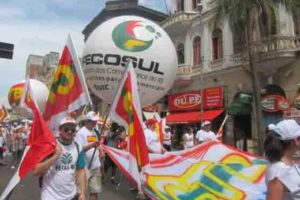Photo: Peoples’ Global Conference
*The following is an excerpt from our paper, Implementing the World Bank Group’s MFD: Reinforcing Corporate Capture of the Global South.
The International Monetary Fund (IMF) and what came to be later known as the World Bank Group (WBG) were established in the 1944 Bretton Woods Conference held at the United States (US). The World Bank was founded as the International Bank for Reconstruction and Development (IBRD) for post-World War II loans. It later shifted towards broader lending for infrastructure and other “development” purposes.In 1960 the International Development Association (IDA) was founded to facilitate loans especially to the poorest countries.IBRD and IDA together comprise the World Bank.
The World Bank Group, as it is known today,is made up of other affiliated institutions all with a focus on assisting private investment towards developing countries. The International Finance Corporation (IFC), focused on lending and supporting private corporations,was founded in 1956. Ten years later, the International Centre for Settlement of Investment Disputes (ICSID) emerged as an institution to decide on cases between investors and governments. The Multilateral Investment Guarantee Agency (MIGA) was then founded in 1988 to provide risk insurance and other guarantees to private investors in developing countries, to protect capital in cases such as expropriation by the state.[i]
The US and the IMF-WB
Since their founding, the United States (US) has played a huge role in the direction of the IMF-WB.The World Bank describes the US as a “leading force” in its establishment.[ii]In terms of location, both the headquarters of the IMF-WB are located in Washington D.C. Among the 189 countries of the IMF, the US holds the highest shares in the Fund’s unit of account (or “special drawing rights”) at 17.46%. This correlates to voting power; one vote from the US has the weight of 1/6of the total. [iii]
|
The IMF-WB in the neoliberal era 1970s-1980s – Structural adjustment This is the IMF-WB focus during the decade of oil shocks, high developing country debt and the Cold War. “Adjusting” economic policies were required for loans, with “reforms” towards export-orientation, deregulation and the privatisation of state enterprises. IMF-WB structural adjustment drew ire of movements for forwarding the US economic agenda while sinking economies further into debt, reducing wages and increasing unemployment. 1990s-2000s – “Poverty reduction” Adjustment for “poverty reduction” continued, with privatisation and “private sector” promotion. The WB’s Poverty Reduction Strategy Papers (PRSP) and the IMF Poverty Reduction and Growth Facility (PRGF) were established. PRSPs were poverty analysis documents prepared by countries using supposedly participative means, which were used by the IMF as basis for PRGF policy conditions and required for countries to access debt relief under the WB’s Heavily Indebted Poor Country Initiative. Conditionalities continued to belie IMF-WB claims to “country ownership,” while country-level participation was criticised as “shallow,” “staged by governments” and ignoring civil society demands. 2010s-present – Even more systematic private sector-led “development” The WB increased support for private sector roles in development. It has pushed public-private partnerships especially in infrastructure, considered by critics as “privatisation by other means.” It argued that big private sector could fill in the “financing gap” in developing country infrastructure. In 2013, the WB released a strategy document with claims towards tighter coordination among the four WB Group institutions (minus the ICSID). These culminated in the MFD approach – featuring a more systematic promotion of private sector financing and roles in development agenda, with public financing as a last resort. This poses even more risks to the people’s right to participate in their development. Sources: IMF, IDA. 1999. Poverty reduction strategy papers – operational issues / IMF. 2002. “IMF Executive Board reviews PRGF.” / IMF. 2018. “IMF support for low-income countries.”/ Lazarus, Joel. 2008. “Participation in PRSPs: reviewing the past, assessing the present and predicting the future. Third World Quarterly. / Peet, Richard. 2003. Unholy Trinity: the IMF, WB and WTO. / World Bank Group. 2013. “A stronger, connected, solutions World Bank Group.” |
|---|
According to the World Bank, the US has “a unique role in influencing and shaping development priorities“ as thesole WB shareholder with veto powers in decisions of Bank structure.[iv]All WBG presidents have been US-nominated US citizens, including today’s Jim Yong Kim. Similar to the IMF, the US holds the highest shares in all the WBG institutions ranging from 14.97% in the IBRD to 22.45% in the IFC.
Before a country’s government becomes a member of the World Bank, it has to be a member of the IMF.[v] Southern governments which became members of the IMF-WB arguably put peoples in a bind, with lower-income governments accepting US-led international monetary norms under the IMF before they could accessprivate sector-driven “development financing” under the WBG.
The Annual Meetings of the IMF-WB is another aspect of the tight links between the two institutions. The meetings are usually held in Washington DC for two years, and in another host country for the next year. The 2018 Annual Meetings will be held in Bali, Indonesia. The Joko Widodo government had reportedly allotted more than USD 53 million for the events, with tight and even militaristic security measures.
“MFD” approach: Concoctions for corporations
As elaborated in our prior paper, The World Bank Group’s Corporatization of Development, the WBG has been promoting its current approach to development finance in the past years. In the last few Spring and Annual Meetings there had been talk on the role of the WBG as a “broker” between investors and developing countries.[vi] This has been more clearly articulated recently as “Maximising Finance for Development,” or the MFD approach.[vii]
A coordinated WB for comprehensive corporate capture?
The World Bank notes that the MFD approach is not altogether new as private sector support has been among the fundamental priorities of its institutions, especially for instance the IFC and MIGA. The way that the MFD is different, says the WB, is in how it makes private sector support “more systematic, making this increasingly the norm for how the WBG does business.” The MFD complements already existing IFC imperatives to “create markets” in developing countries. It also ties up with the existing IDA-IFC-MIGA efforts to use IDA grants and loans to create conditions for international capital.[viii]
Described more simply, the MFD systematises various means to support big private capital under one coordinated banner. Such “support” includes financing, “policy reforms” and “technical assistance,”guarantees for possible political risks, as well as public-private partnerships (PPPs) — all to loosen up constraints for investor entry.
In talking about MFD, the WBG evokes the Hamburg Principles to justify its trajectory. “Hamburg” is a G20 policy document that reinforces the dominant view on how multilateral banks “contribute” to sustainable development. Namely, this is through “crowding-in” private investment by “supporting reforms and reducing risks, and hence the cost, of private capital.”[ix] #
[i]The World Bank. “History.” http://www.worldbank.org/en/about/history
[ii]The World Bank. “The World Bank in United States.” https://www.worldbank.org/en/country/unitedstates/overview
[iii]International Monetary Fund. 2018. “IMF Members’ Quotas and Voting Power, and IMF Board of Governors.” https://www.imf.org/external/np/sec/memdir/members.aspx
[iv]The World Bank. “The World Bank in United States.”
[v]The World Bank. 2018. “Member Countries.” http://www.worldbank.org/en/about/leadership/members
[vi]IBON International. 2017. “World Bank ‘trillions’: More PPPs, even worse days of privatisation?” https://iboninternational.org/article/2017/08/world-bank-trillions-more-ppps-even-worse-days-privatisation
[vii]The World Bank. “Maximizing Finance for Development.” http://www.worldbank.org/en/about/partners/maximizing-finance-for-development
[viii]International Development Agency. “IDA18 IFC-MIGA Private Sector Window.” https://ida.worldbank.org/financing/ida18-ifc-miga-private-sector-window
[ix]Ibid.


